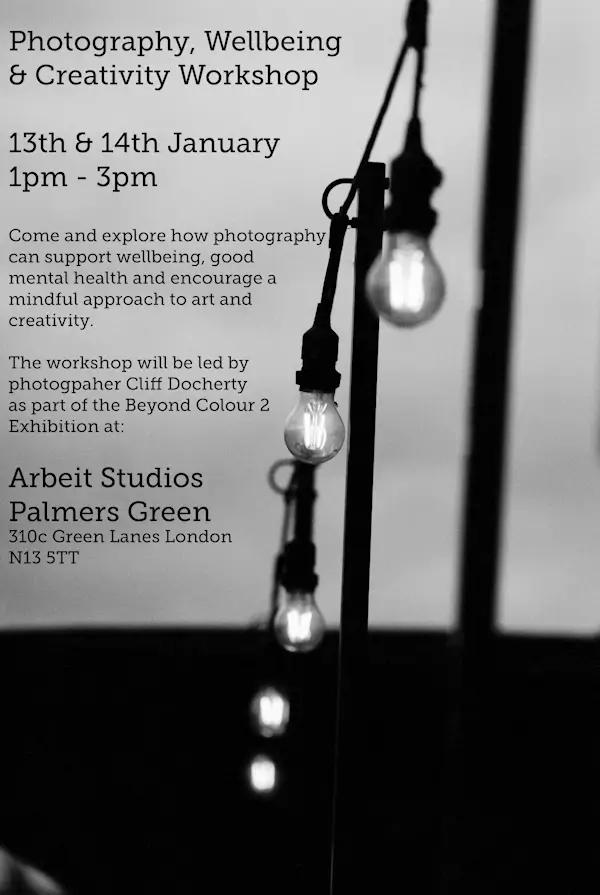So what can we do with these cameras and phones in our pockets to help our wellbeing?
Here’s a few suggestions:
1. Go for a walk around the block. Your goal is to take 10 pictures in black and white. You’re looking for shape, form, texture. It can be a fragment of something, an abstract view. Maybe its something you pass every day but now you’re going to crouch down low and look at it from a different angle and see if it sweeps away or makes a funky shape. Or maybe something is rusting and decaying or coming to life. Or reflected in a puddle. Can you link your ten pictures in a theme? When you remove colour you look beyond what’s in front and start to think about why are things the way they are. Can you make something startling from the mundane?
2. How are you feeling today? Perhaps you don’t want to leave the house, or you can’t because you don’t feel well or the heavens are tipping down and its January and grey. Its selfie time but not you yourself. We’re going to take five non-selfie selfies. Five things in the house that show an aspect of your personality. Do you tinker with cars? Are you a keen cook? Are you a Strictly fan? How can you show that cool part of you in a creative way without actually putting yourself in the picture.
3. A long-term project. Go for a walk and find a spot to photograph at different times of the year. Maybe one picture a month to record the seasons changing. It could be a bench in the park, or a tree in your street, the view from your window. Or the same project in a day, one picture an hour of the same place. And then to accompany the work, a written piece about what you observed over the life of the project. What happened out of the frame. A little mindfulness, being in the moment while you took the picture.
4. You pair up with a trusted friend or friends who can support you. Your task is an emotion. You each have 15 minutes to go outdoors and capture the emotion you’re feeling without photographing another person. Once you’ve done this you come back and share that picture, in confidence, with your trusted friend and talk about why you took the picture you took, whether you would like to take a different type of picture and what your plans are now you’ve shared it. Many artists start their work with an emotion and go from there but be aware it can feel difficult sometimes and if you feel vulnerable doing this, this may not be the project for you outside of a formal art therapy setting.
5. Plan your season! Buy a book like London’s Hidden Walks and put some dates in the diary to do some of these amazing, off the beaten track walks through the capital. I promise you will find inspiration in Greenland Dock, leafy Chiswick, the artworks along the River Lea and deepest Bromley’s best kept secrets. You’ll also get some healthy walks under your belt, some fabulous coffee along the way and make some memories.
6. Go vintage. Got an old camera in the cupboard that takes film? Analogue photography, rather like vinyl records, is in the middle of a massive resurgence at present. Dust off those old cameras. I still use the 1957 box brownie my dad gave me as a hand-me-down when I was small because it only takes 8 pictures and it makes me slow right down, think about each photo, why am I taking it, and it becomes almost meditational. Each shot has to count because you’re paying for processing and its not cheap. But its such a treat and so tactile. Go to a flea market, find an old camera, clean it up, and make it sparkle creatively as well as literally.
7. Go cheap. Someone I used to follow on Twitter did an annual challenge called the Really Sxxxxx Camera Challenge and the idea was people would take amazing pictures with really cheap and nasty bits of tat bought off eBay for a couple of quid. Some mindset, it slows you down. What can I do with this piece of plastic or cardboard. How can I make something valuable out of something valueless?
8. Go local. What’s on your doorstep? Do you really know? Do you follow the local newsletter? I spent a hot day last summer photographing a bunch of knights in boiling armour and damsels in heat distress after spotting an ad in the Palmers Green Community Newsletter. Who knew you could watch jousting locally?
On January 13th and 14th 2024 I'll be hosting some workshops in Palmers Green, North London, for people wanting to explore wellbeing and photography. Numbers are strictly limited but if you would like to attend, contact me at .
Palmers Green resident Cliff Docherty is an NHS social prescriber and personalised care leader in east London, as well as a keen photographer.




